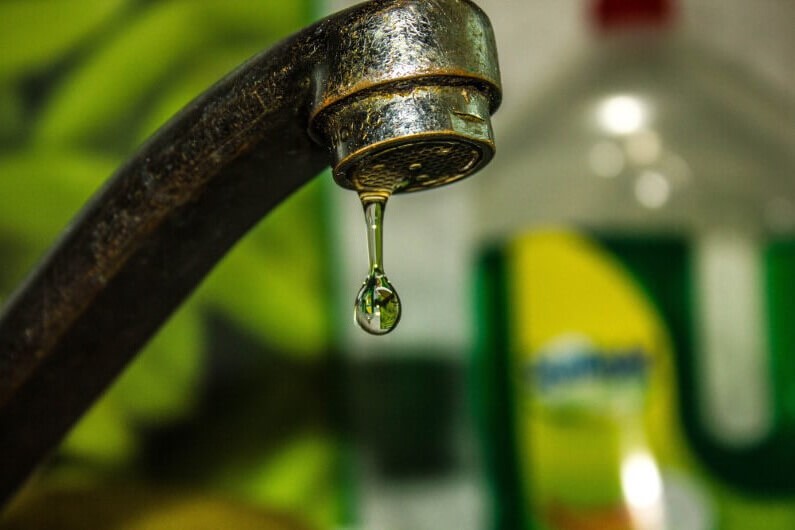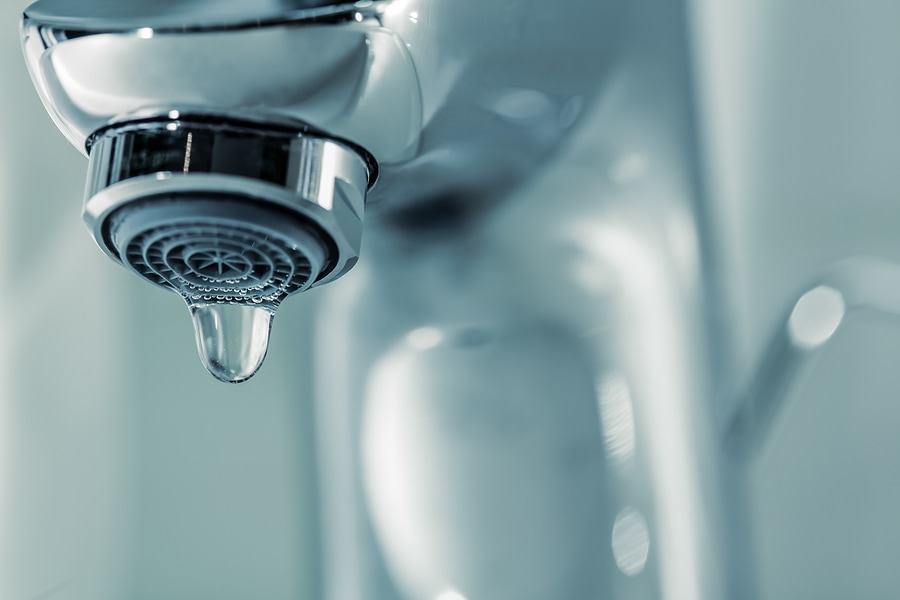Discovering the Relevance of Dealing with a Broken Faucet
Discovering the Relevance of Dealing with a Broken Faucet
Blog Article
Just how do you actually feel when it comes to Why Are My Faucets Dripping (And Can I Fix It Myself)??

Trickling taps could seem like a minor hassle, however their effect goes beyond just the nuisance of the audio. From drainage to sustaining unneeded financial prices and health risks, disregarding a trickling faucet can bring about various repercussions. In this write-up, we'll delve into why it's essential to address this typical house issue immediately and successfully.
Wastefulness of Water
Ecological Impact
Trickling taps contribute considerably to water wastage. According to the Epa (EPA), a single tap dripping at one drip per second can squander more than 3,000 gallons of water annually. This not just pressures water resources but also affects ecosystems and wild animals depending on them.
Step-by-Step Overview to Taking Care Of a Dripping Faucet
Devices Needed
Before trying to repair a trickling faucet, collect the required devices, consisting of an adjustable wrench, screwdrivers, substitute components (such as washers or cartridges), and plumber's tape.
Typical Tap Issues and Their Solutions
Determine the type of tap and the particular problem causing the drip. Usual issues include damaged washers, rusty valve seats, or defective O-rings. Describe producer directions or on-line tutorials for detailed guidance on repair work.
Financial Expenses
Raised Water Bills
Beyond the ecological influence, dripping taps can blow up water bills considerably. The gathered wastefulness in time equates right into greater utility expenditures, which might have been avoided with timely repair work.
Possible Residential Property Damages
Moreover, extended dripping can cause harm to components and surface areas bordering the faucet. Water build-up can cause staining, corrosion, and also architectural concerns if left ignored, leading to additional repair prices.
Wellness Issues
Mold and Mold Growth
The constant visibility of wetness from a dripping tap creates a suitable environment for mold and mildew and mildew development. These fungi not just endanger interior air quality however likewise position health and wellness risks, specifically for individuals with respiratory problems or allergies.
Waterborne Illness
Stationary water in dripping faucets can end up being a breeding place for bacteria and other microorganisms, raising the threat of waterborne diseases. Impurities such as Legionella microorganisms grow in stationary water, possibly bring about severe diseases when ingested or breathed in.
DIY vs. Specialist Repair service
Advantages and disadvantages of DIY Repair
While some might attempt to take care of a leaking tap themselves, DIY fixings come with their own set of difficulties. Without correct knowledge and devices, do it yourself attempts can aggravate the issue or bring about incomplete repair services, lengthening the problem.
Benefits of Employing a Specialist Plumber
Hiring a professional plumber guarantees that the underlying root cause of the trickling tap is addressed effectively. Plumbing professionals have the proficiency and equipment to identify and fix faucet issues effectively, saving time and minimizing the threat of further damage.
Ecological Obligation
Specific Payment to Conservation
Taking duty for dealing with leaking faucets straightens with more comprehensive efforts toward water preservation and ecological sustainability. Every person's activities collectively make a considerable effect on preserving precious resources.
Lasting Living Practices
By prioritizing punctual fixings and adopting water-saving routines, individuals contribute to lasting living practices that profit both present and future generations.
Preventive Measures
Normal Upkeep Tips
To prevent trickling faucets, execute routine upkeep such as cleaning up aerators, inspecting for leakages, and changing worn-out components promptly. Furthermore, consider setting up water-saving tools or updating to more effective components.
Relevance of Prompt Repair Works
Attending to trickling taps as soon as they're discovered protects against further water waste and prospective damage, eventually conserving both water and cash in the long run.
Impact on Property Value
Perception of Well-Maintained Residential Or Commercial Property
Maintaining a home in good condition, consisting of resolving maintenance problems like leaking taps, enhances its perceived value and desirability amongst possible customers or lessees.
Influence on Resale Worth
Residences with well-maintained plumbing fixtures, consisting of faucets, command higher resale worths in the realty market. Addressing dripping taps can add to a favorable impression throughout home evaluations and arrangements.
Final thought
Dealing with a leaking faucet goes beyond plain convenience; it's an essential step towards preserving water, reducing monetary expenses, and securing wellness and residential or commercial property. Whether with do it yourself repairs or professional assistance, taking action to fix dripping taps is a tiny yet impactful method to advertise accountable stewardship of resources and contribute to a much healthier, extra lasting future.
How to Fix a Dripping or Leaky Faucet
A leaking faucet is one of the most common problems that homeowners encounter, but it being commonplace doesn’t make it any less annoying. The constant drip drip drip of a leaking bathtub faucet, showerhead, or sink tap can disturb your home’s serenity. Left neglected, a dripping faucet can also result in higher water bills and discoloration or mold growth in your sink or plumbing fixtures.
Fortunately, you don’t have to be a trained plumber to know how to stop a dripping faucet. With some basic tools, replacement parts, and a little patience, leaky faucet repair is a breeze. In this article, we’ll explain what causes dripping faucets and how you can fix them.
What Causes a Leaking Faucet?
Kitchen and bathroom faucets come in all manner of designs, but most involve some combination of valves, O-rings, seals, and washers. The O-ring is usually the weakest link, but any one of these pieces can wear down over time. Heat, moisture, temperature fluctuations, minerals, mold, and movement can contribute to warping and corrosion, breaking the watertight seal. This just comes with the territory of being a homeowner. Everything is always subject to wear and tear, and some component parts of your appliances and fixtures need to be replaced on occasion. At least replacement O-rings are cheap!
More rarely, dripping faucets can be a symptom of excessively high water pressure. Were this the case in your home, you would probably notice that the leak is not isolated to one faucet. Water pressure issues are harder to resolve on your own. We recommend contacting a professional plumber if you suspect your water pressure is too high.
How to Fix a Dripping Faucet
Pipe wrench or monkey wrench Allen wrench set Screwdrivers Old towel or rag Shut off the water.
Before you do anything, you need to turn off the water to keep from drenching your kitchen or bathroom. You should find a valve under the sink and against the wall. Once you’ve turned this valve, try turning the faucet on to confirm that the water source has been cut off.
If you can’t locate your local valve for the faucet you’re working on, you can always shut off the water to the house at the main valve. Of course, this will prohibit anyone from using the sinks, showers, or toilets while you’re working on the faucet that’s giving you trouble.
Plug or block the drain.
You’ll be disassembling the faucet and removing some small bits of hardware. Plug the drain with a stopper or rag to avoid the possibility of a small screw falling into your P-trap.
Take apart the faucet assembly.
There are several varieties of kitchen and bathroom faucets, each with its own manner of assembly. For detailed instructions on how to disassemble your faucet, you can refer to the fixture’s manual or contact the manufacturer. If you know whether you have a ball, disc, cartridge, or compression faucet, you can find detailed schematics online.
In general, you need to begin by removing the faucet handles. You might notice a small screw that you’ll need to remove with a screwdriver or Allen wrench. If you don’t see any visible securing hardware, it’s likely hidden under a decorative cap that can be unscrewed or popped off with flathead screwdriver.
Remove each piece methodically, consulting a schematic when necessary. Take notes or arrange the pieces in such a way to make it easier to correctly reassemble the faucet later.
Remove the cartridge.
Once you’ve removed the handles and securing hardware, you should be able to remove the valve cartridge or stem. Some cartridges will slide right out. Other faucet models will require you to loosen a nut with a pipe wrench before you can remove the valve stem.
Examine the exposed hardware.
With the cartridge or stem removed, inspect the component parts. Check the rubber O-rings for wear and tear. Also examine the seat washer for corrosion or other damage. These pieces are usually the responsible parties for a dripping faucet, but it’s worth inspecting the other component parts while you have the faucet disassembled.
Find replacement parts.
Once you’ve identified which faucet component has failed, find an identical replacement. Your local hardware store should have O-rings, seat washers, and other standard components in stock. If you have a luxury or uncommon faucet, you may have to contact the manufacturer for a replacement part.
It’s a good idea to take your old parts with you to the hardware store so you can compare them with the store’s inventory and be sure you’re purchasing the correct replacement.
Reassemble the faucet.
With your new parts in hand, reconstruct the faucet and handles. Don’t be tempted to overtighten screws or nuts. You might think this could create a better seal, but it can instead damage or bend a delicate part of the assembly and create a new problem for you.
Turn on the water and test the faucet.
The only thing left to do is test your work. Unplug the sink, turn the water back on, and try the faucet. Congratulate yourself on a job well done!
https://www.libertyhomeguard.com/how-to-fix-a-dripping-or-leaky-faucet/

Do you enjoy more info about ? Try leaving feedback below. We will be delighted to see your reactions about this blog entry. Hoping to see you back again later on. If you appreciated our article kindly make sure you remember to pass it around. I cherish your readership.
Report this page